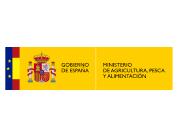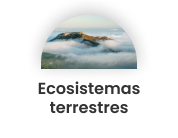
Santolina semidentata’, a Habitats Directive species in regression. Application of novel tools for conflict resolution, management and monitoring (SantolinaEvolClim)
MITECO
Line of action:
Terrestrial ecosystemsStatus:
FinalizadoExecution date:
2019End date:
2022Total budget:
166.666,67 €Amount of aid from the Biodiversity Foundation:
45.600 €Santolina semidentata, a plant species endemic to the northwestern Iberian Peninsula and protected by the Habitats Directive of the European Union, is able to grow in soils with very different characteristics thanks to its great ecological adaptability.
This project incorporates new techniques to resolve taxonomic conflicts in this species, while studying the effect of climate change in an area of biogeographic transition between the Atlantic and the Mediterranean. The risk of displacement, either by substitution or introgression, by phylogenetically close species better adapted to drier climates is a problem faced by many plant species. Studies of the ecological niche and relationship with the substrate allow the identification of relevant areas for the future conservation of this species.
The general objective of the project is the application of new methodologies in the resolution of taxonomic conflicts in threatened flora, the study of the effect of climate change and the identification of relevant areas for conservation. Taking Santolina semidentata, a species included in Annex II of the Habitat Directive, as a model species, its relationship with the threatened species Santolina melidensis will be clarified and the risk of hybridization with Santolina rosmarinifolia will be analyzed.
It has these specific goals:
- Update of information on the species and design of a monitoring protocol based on field work experience.
- Test the molecular and ecological niche techniques proposed for the resolution of taxonomic conflicts, detection of hybridization problems and identification of relevant areas for conservation in the model species Santolina semidentata.
- Preparation of a management proposal for the species and habitats based on the information obtained, as well as an analysis of the importance of the studies carried out and their need for plant species included in the Habitats Directive.
- Involve the community of naturalists and citizens in general in the monitoring of a threatened flora species through participatory projects. To value the importance of biodiversity and disseminate the role of scientific research for the proper management of our natural values.
- Gathering of previous information and sampling.
- Genetic studies.
- Environmental niche modeling.
- Substrate adaptability study.
- Integral management proposal on the applicability of the results in the management of threatened flora.
- Dissemination and communication of the project.
- It has been analysed how climate change may be affecting the viability of Santolina semidentata populations, how adaptation to different substrates of this species works, what is the kinship relationship it maintains with related species and if it is undergoing hybridisation processes with any of them that compromises its genetic uniqueness and its adaptive capacity to environmental changes.
- Ecological niche modeling tools have been used to identify the optimal environmental ranges of the species and other nearby species.
- We have identified over the Iberian geography the places that can harbor the species under current and future climatic conditions in climate change scenarios, observing how the distributions are modified in this case, and how the distributions of nearby species overlap, increasing the risk of hybridization.
- Using molecular tools, it has been shown that the problem of hybridization between species is less relevant for semidentata at present than has been suggested, although its role may be important in future scenarios.
- High-throughput molecular tools have made it possible to individualize Santolina melidensis as a sister species, but different from Santolina semidentata, something that had not been verified with more conventional molecular tools.


Santolina semidentata’, a Habitats Directive species in regression. Application of novel tools for conflict resolution, management and monitoring (SantolinaEvolClim)









 back to search
back to search 